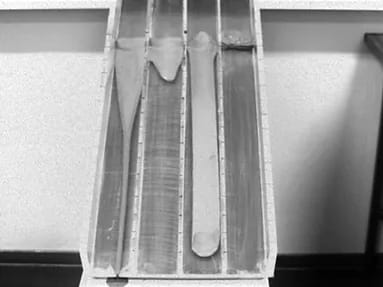Quick clays are unstable soils that can be responsible for severe landslides, like the infamous Rissa landslide of april 1978 in Norway. Quick clay landslides are usually attributed to rheology modifications caused by changes in the water content, extraction of the salt by subsurface water drainage, and/or triggering by external mechanical perturbations. However, the extreme instability of these soils has until recently remained poorly understood. Quick clay is a thixotropic material, in which aging competes with shear rejuvenation.
https://hal-insu.archives-ouvertes.fr/insu-00610266
This video shows what is almost certain to be a quick clay landslide . It occurred in the morning of Wednesday 3 June 2020. It was captured at Kråknes in Alta, in the north of Norway.
Laboratory landslides modeling: in the four lanes from left to right the concentration of quick clay in water increases. Interestingly, the landslide is much more pronounced for 61% than for 59%.

Quick clays are glaciomarine materials that have strange properties. When disturbed they are very weak – indeed their behaviour is similar to that of a fluid. But undisturbed they are much stronger, primarily because of the role of salt, which glues the particle structure together. When this structure is disturbed, the quick clay rapidly weakens, allowing these spectacular landslides to form.